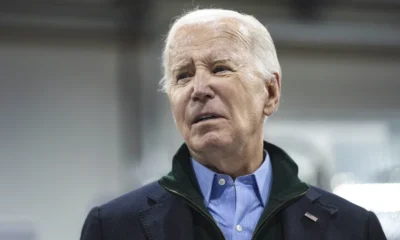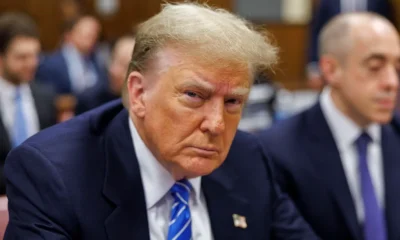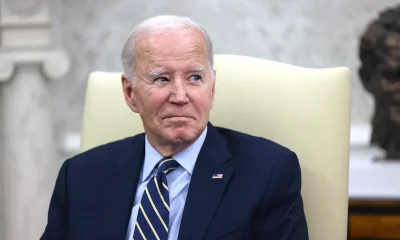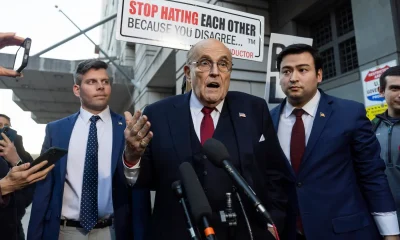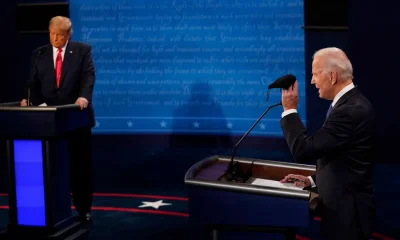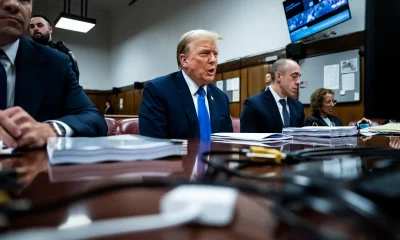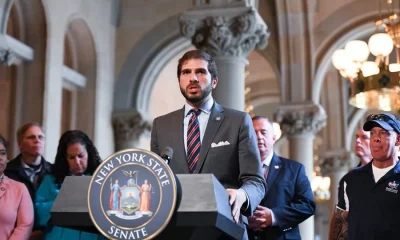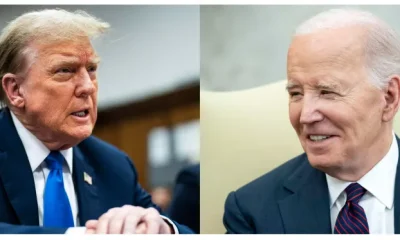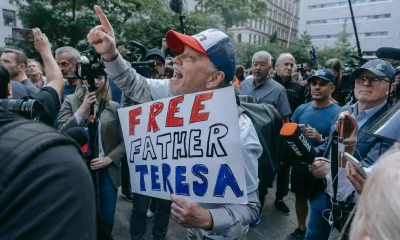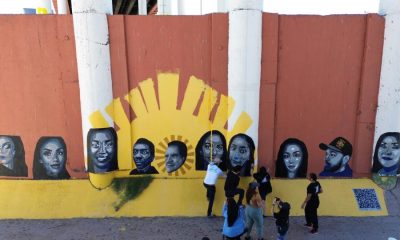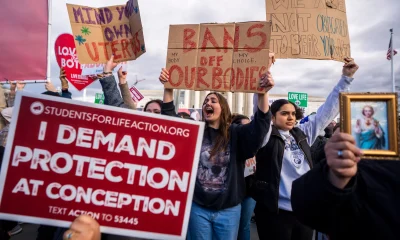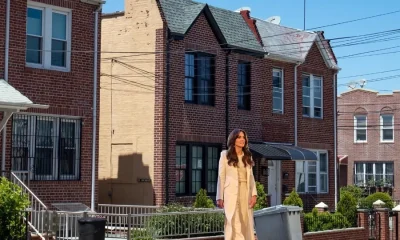International
New York boasts of a migration model but criticizes the lack of federal support
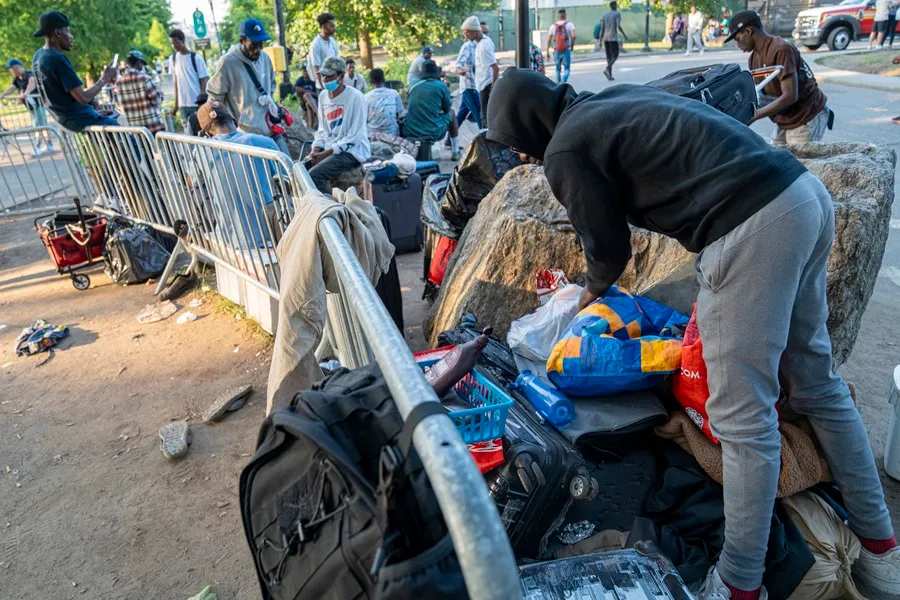
New York City boasts of a migration model having received and integrated more than 200,000 irregular immigrants in the last two years, but complains about the null support received from the federal government of Washington, trapped in an electoral logic where the migration issue has become political dynamite.
“Our support network is better than the one they find in any other city and state, and we are proud to have been able to specifically support all these people, who already total 202,000, but the burden is only ours and we do not see enough support from the federal government,” the city’s Immigration Commissioner, Manuel Castro, says in an interview with EFE.
Castro embodies like few others the famous ‘American dream’: he arrived in New York from Mexico as undocumented at the age of only five, and three decades later, after a youth dedicated to activism in favor of asylum seekers, he became the top immigration leader of New York, the city “raised by immigrants,” as he himself remembers.
Two years ago, the Republican governor of Texas, Greg Abbott, devived the ‘bus strategy’, which consisted of filling these vehicles with newly arrived immigrants from Mexico and sending them to what he called ‘progressive cities’ with the promise that they would receive accommodation and food there. It was not a lie in the case of New York: a rule from 50 years ago forces the city not to leave anyone homeless.
In the following months, New York declared a ‘humanitarian crisis’ but it did not stop providing assistance to the thousands of people who arrived not only from Texas, but from other states attracted by the generosity that the city deployed with immigrants: roof for everyone, school for minors and medical expenses.
The attention to all these people made the city calculate an extra expense of 10 billion dollars between 2022 and 2025, which it faced “without the support of the federal government, even though it should be a responsibility shared with the other cities and states,” Castro recalls.
The city was “obliged” – in the words of the Commissioner – to limit the stay in public shelters to one or two months, depending on the circumstances, through an exceptional judicial remedy, but guaranteed that families with children were not evicted in any case.
However, and as EFE has been able to verify in the giant camp of Randall’s Island, where adults without a family are sent, the law is applied in a very flexible way and there are several tenants who have been looking for more than four months, while looking for a work permit that never arrives.
And it is that another of the problems they face is the enormous slowness of bureaucratic efforts to obtain asylum status and/or a work permit, which usually takes more than 12 months, and that forces many immigrants to fall into the underground economy, usually in street sales or as delivery people of food on a bicycle.
“The emigration system doesn’t work,” Castro reflects. There is a great demand for jobs and it would be logical for us to support them with a work permit. We have been without a solution to these problems for decades, it is an inadequate system and Congress should act,” he insists, although he recognizes that the proximity of the electoral appointment complicates everything.
Castro regrets that all the attention paid to immigrants is now the victim of two opposing narratives: “On the one hand, they tell us that we are not doing enough for immigrants, that we have a moral obligation not to abandon them; on the other, they accuse us of giving them too much, and the more we give them, the more they will come,” he explains.
“It is symbolic of what is happening in the country, there is too much political division,” he believes, recognizing that in the year of elections the issue has become especially thorny, with a Republican candidate like Donald Trump who “with his threats of mass deportations is generating a huge fear and uncertainty,” and makes some immigrants not dare to go to a health center or a police station for fear of expulsion.
International
Police investigate deaths of Rob Reiner and wife as apparent homicide

The Los Angeles Police Department (LAPD) is investigating the deaths of Hollywood actor and filmmaker Rob Reinerand his wife as an “apparent homicide,” amid a wave of tributes to the director of classics such as When Harry Met Sally.
According to U.S. media reports on Sunday, Rob Reiner and Michele Singer Reiner were found dead at their Los Angeles mansion with what appeared to be stab wounds.
Several political figures shared messages of condolence following the reported deaths of the director of A Few Good Menand his wife.
While the LAPD did not officially confirm the identities of the victims, it stated that homicide detectives were dispatched to the Reiner residence.
“At this time, no additional details are available and the investigation into an apparent homicide is ongoing,” the Los Angeles Police Department said in a statement posted on social media.
LAPD Deputy Chief Alan Hamilton told reporters that no arrests have been made and that no individuals are currently being questioned as suspects.
“I’m not going to confirm whether anyone is being questioned at this moment or not. We are going to try to speak with as many family members as we can,” Hamilton said.
CNN reported that a family spokesperson confirmed the deaths of Reiner and his wife.
California Governor Gavin Newsom, former U.S. President Barack Obama, and former Vice President Kamala Harrisissued statements expressing their condolences.
International
U.S. and Mexico Reach Deal to Address Water Deficit Under 1944 Treaty

The United States and Mexico have reached an agreement to comply with current water obligations affecting U.S. farmers and ranchers and for Mexico to cover its water deficit to Texas under the 1944 Water Treaty, the U.S. Department of Agriculture said in a statement.
The department уточified that the agreement applies to both the current cycle and the water deficit from the previous cycle.
On Monday, U.S. President Donald Trump accused Mexico of failing to comply with the water-sharing treaty between the two countries, which requires the United States to deliver 1.85 billion cubic meters of water from the Colorado River, while Mexico must supply 432 million cubic meters from the Rio Grande.
Mexico is behind on its commitments. According to Washington, the country has accumulated a deficit of more than one billion cubic meters of water over the past five years.
“This violation is severely harming our beautiful crops and our livestock in Texas,” Trump wrote on Monday.
The Department of Agriculture said on Friday that Mexico had agreed to supply 250 million cubic meters of water starting next week and to work toward closing the shortfall.
Agriculture Secretary Brooke Rollins, quoted in the statement, said Mexico delivered more water in a single year than it had over the previous four years combined.
Trump has said that if Mexico continues to fall short of its obligations, the United States reserves the right to impose 5% tariffs on imported Mexican products.
Mexico’s Deputy Foreign Minister for North America, Roberto Velasco, said that a severe drought in 2022 and 2023prevented the country from meeting its commitments.
International
Several people shot in attack on Brown University campus

Several people were shot on Saturday in an attack on the campus of Brown University, in the northeastern United States, local police reported.
“Shelter in place and avoid the area until further notice,” the Providence Police Department urged in a post on X. Brown University is located in Providence, the capital of the state of Rhode Island.
U.S. President Donald Trump said on his social media platform Truth Social that he had been briefed on the situation and that the FBI was on the scene.
At 5:52 p.m. local time (11:52 p.m. GMT), Brown University said the situation was still “ongoing” and instructed students to remain sheltered until further notice.
After initially stating that the suspect had been taken into custody, Trump later posted a second message clarifying that local police had walked back that information. “The suspect has NOT been apprehended,” the U.S. president said.
-

 Central America3 days ago
Central America3 days agoPanama seizes over three tons of drugs hidden in Caribbean port container
-

 International2 days ago
International2 days agoPolice investigate deaths of Rob Reiner and wife as apparent homicide
-

 International4 days ago
International4 days agoSeveral people shot in attack on Brown University campus
-

 Central America2 days ago
Central America2 days agoOAS urges swift recount in Honduras as election results remain uncertain
-
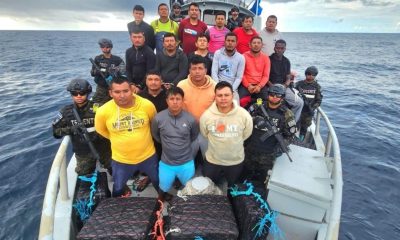
 Central America23 hours ago
Central America23 hours agoEl Salvador ranks among top countries in the Americas in fight against organized crime
-
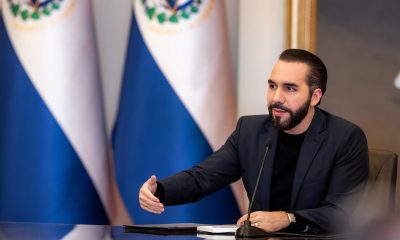
 Central America23 hours ago
Central America23 hours agoBukele says AI partnership with xAI will transform public education in El Salvador
-

 International4 days ago
International4 days agoU.S. and Mexico Reach Deal to Address Water Deficit Under 1944 Treaty



























